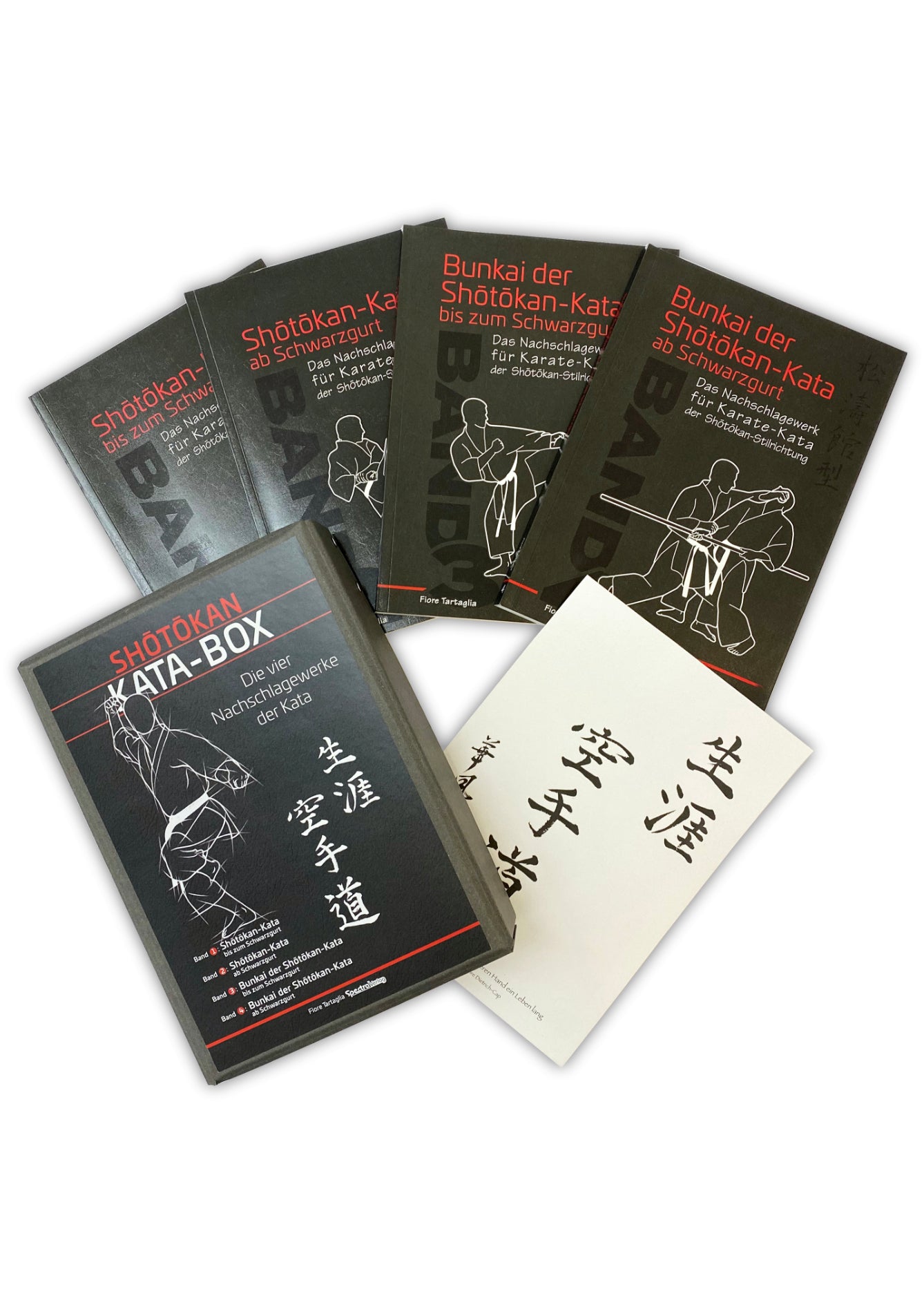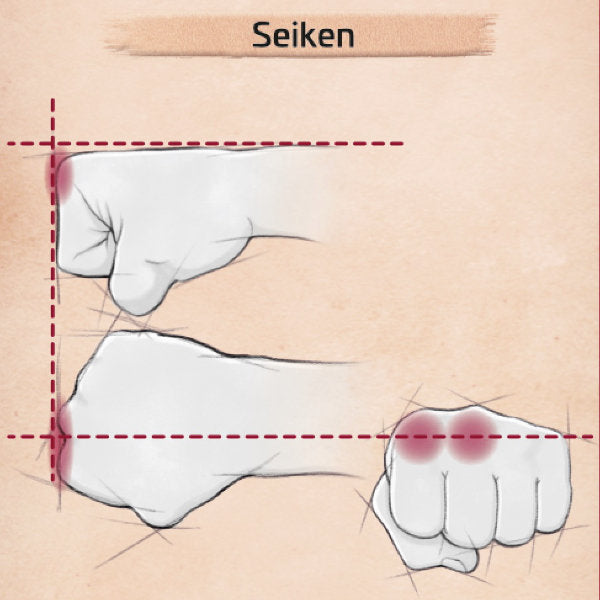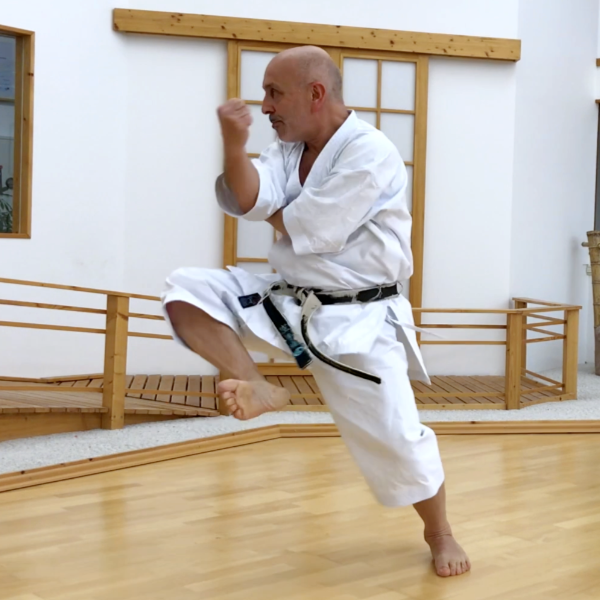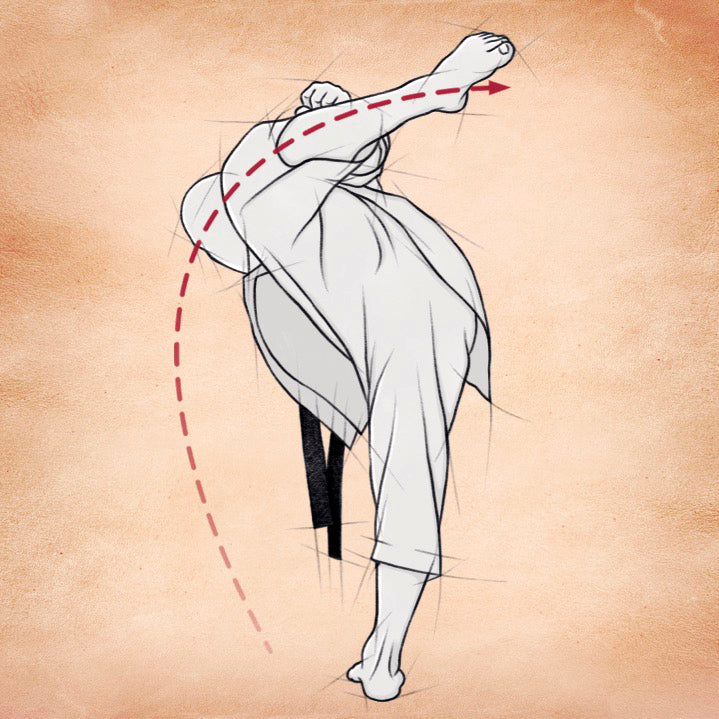BASSAI SHO – DESTROY THE WALL, SMALL.
Unlike Bassai dai, Bassai shō incorporates many unique techniques, giving it a unique style of expression. The various defenses make learning Bassai shō bunkai very instructive, especially in terms of self-defense.
The yōi in Bassai shō is performed in heisoku dachi. The outer edge (shutō) of the left hand is positioned over the inner edge (haitō) of the right hand. The arms are extended downward in front of the body. As in Bassai dai, the first defensive technique is to directly engage the opponent's attack to throw them off balance. This is where the term "destroy the wall" comes from: breaking the attack before it has reached its full force.
Unlike the Bassai dai version, in Tsukami yose (before the Fumikomi), the left hand clasps the right wrist. In Bassai dai, the right wrist is only lightly touched.
Duration: approximately 60 seconds












